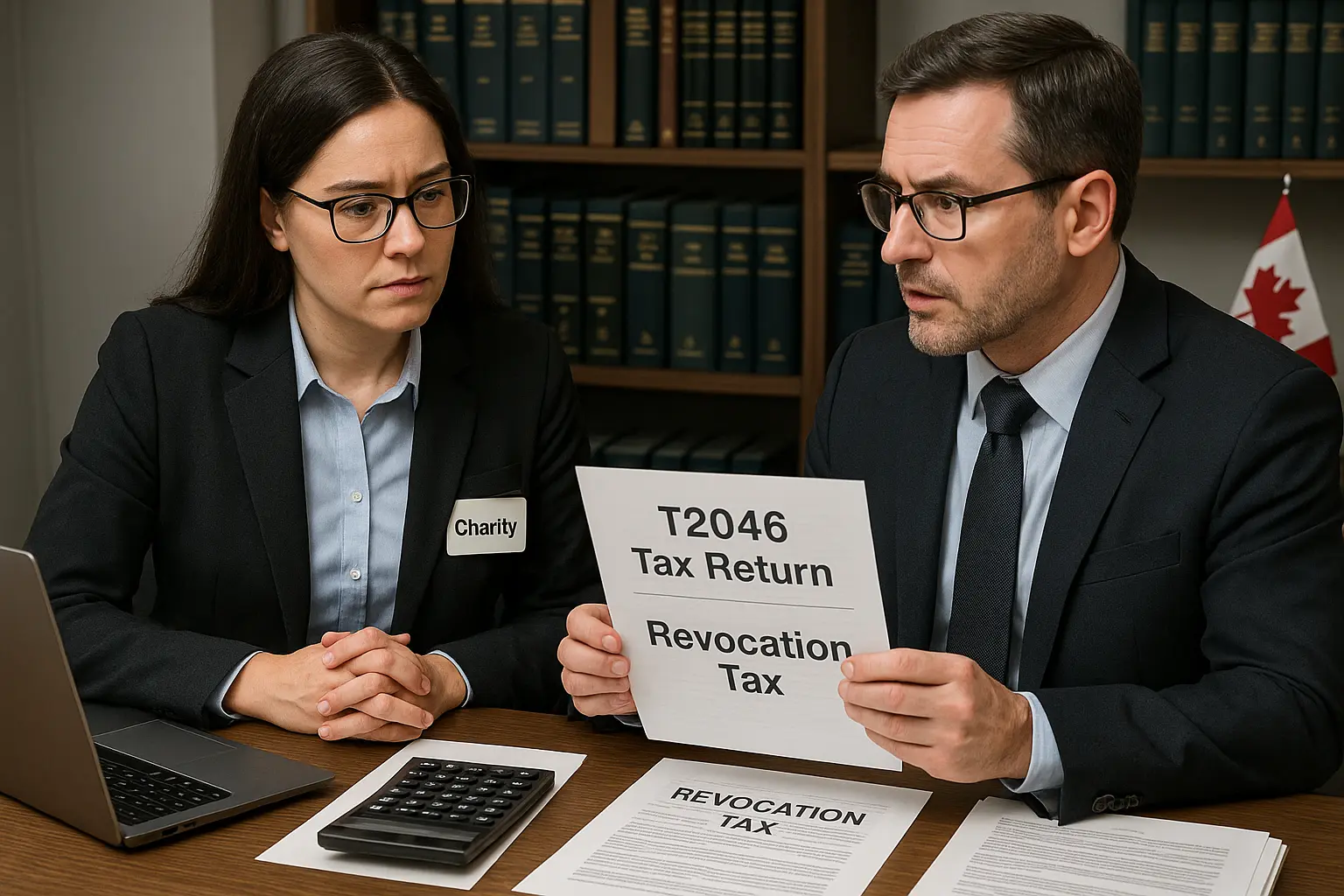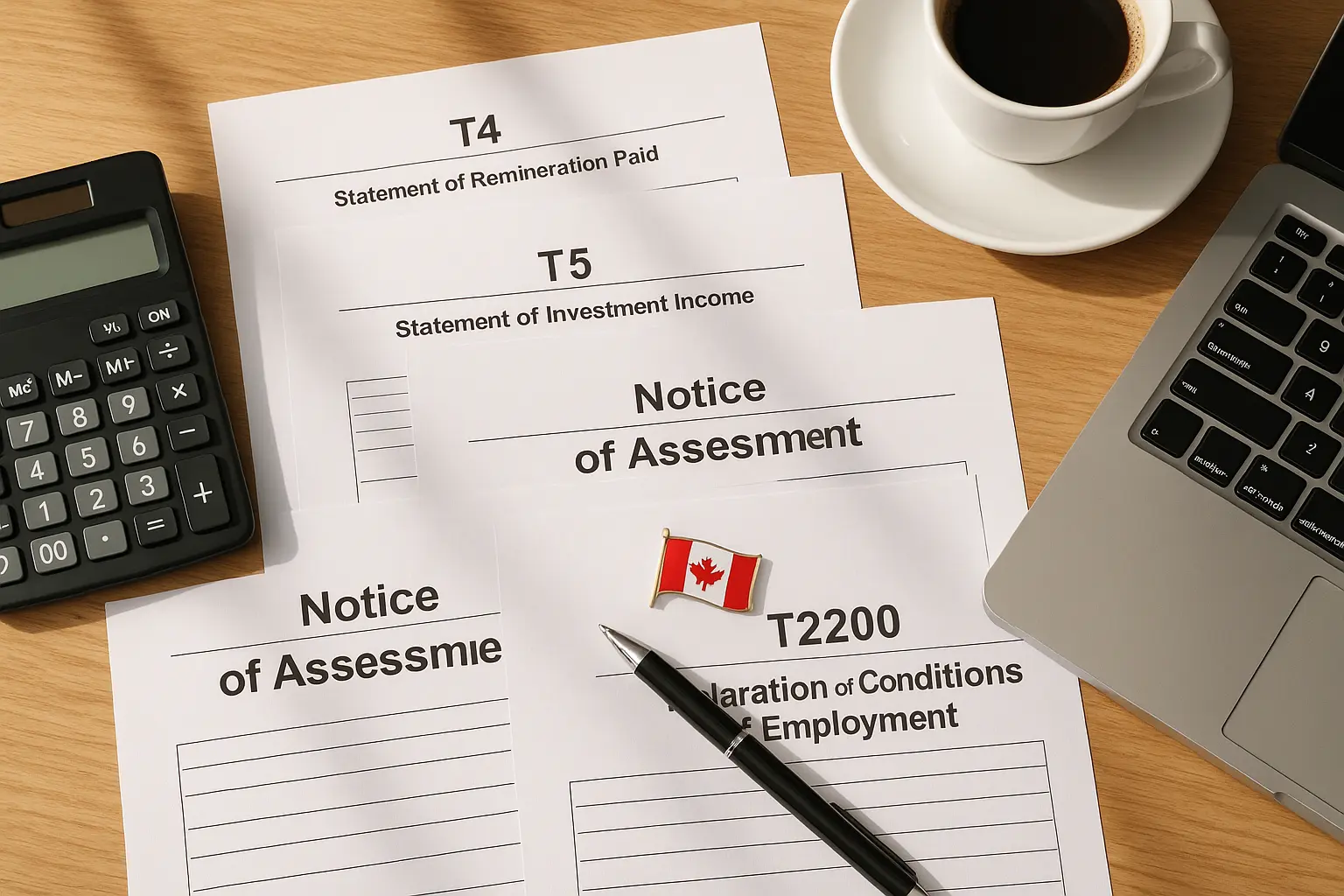Keeping Your Canadian Charity on Track: Understanding the T3010 Return

Running a Canadian charity means managing many responsibilities. Properly filing your T3010 return is one of the most important tasks.
This annual form is a compliance requirement and a public record. It shows how your organization uses charitable funds and carries out its mission.
Every registered charity in Canada must file a T3010 Registered Charity Information Return within six months of its fiscal year-end. Failing to file leads to automatic revocation of your charitable status.
When you lose registration, you can no longer issue tax receipts. You also lose tax-exempt status and may face significant penalties.
This guide explains what you need to know about the T3010. We'll cover which forms and schedules apply, and how to handle recent legislative changes.
Whether you're new to filing or want to improve your compliance, this guide will help you stay in good standing with the Canada Revenue Agency. Transparent reporting also builds public trust in your organization.
Overview of the T3010 Return
The T3010 Registered Charity Information Return is the main annual reporting requirement for Canadian registered charities. Charities file this return with the Canada Revenue Agency to keep their charitable status and meet legal obligations under the Income Tax Act.
Purpose and Role of the T3010
The T3010 return has several important functions in Canada's charity regulatory system. The CRA uses it to monitor registered charities and ensure they follow the rules to keep their status.
Financial Transparency: The return gives detailed information about a charity's finances and activities. Most sections are public, so donors and the public can access them through the CRA's charity database.
Compliance Monitoring: The CRA uses the T3010 to check if charities meet their disbursement quota requirements. The disbursement quota is the minimum amount charities must spend each year on charitable activities or qualifying disbursements.
Public Accountability: The return creates transparency by making charity operations visible. This helps build trust between charities and their supporters.
Running a charity is about making a difference but also involves important paperwork. One of the key things you need to know is about the T3010 Registered Charity Information Return. Think of it as your charity's annual check-up with the Canada Revenue Agency (CRA).
Why This Form Matters
The T3010 serves two main purposes:
- Keeping Charities Compliant: It helps the CRA ensure that your charity is following the rules and staying in good standing.
- Transparency for the Public: It provides information to the public, so people can see how your charity is operating.
Who Needs to File?
Every registered charity in Canada must file a T3010 every year, no exceptions. This includes:
- Inactive Charities: Even if your charity didn't do much during the year, you still need to file. Just explain why you were inactive on the form.
- Charities That Are Closing Down: If you're no longer operating, you still need to file a final T3010. After that, you'll want to officially close your charity by requesting voluntary revocation.
When Is It Due?
You have six months after your charity's fiscal year-end to file the T3010. For example, if your fiscal year ends on January 31st, your form is due by July 31st.
What Happens If You Don't File?
The CRA can revoke your charitable status, which means:
- You can't issue donation receipts.
- You'll have to pay income tax.
- You'll need to give away your assets or pay a hefty tax.
Important Things to Know Before Filing:
- Internal Trusts: The CRA has clarified that charities don't need to file a separate T3 trust income tax return for internal trusts. These trusts are when a charity receives a gift with specific conditions. The information is instead included in the T3010.
- Gather Your Documents: You'll need the T3010 form, financial statements, and other forms depending on your charity's activities.
- File Online: My Business Account is the easiest way to file. It helps ensure you include everything you need.
- Keep Your Contact Info Up-to-Date: The CRA and the public need to be able to reach you.
How to File:
- Online: Use the CRA My Business Account.
- By Mail: Send your completed T3010 to the CRA's Charities Directorate.
What Happens After You File?
- You'll get a confirmation from the CRA.
- Your information will be available on the CRA's list of charities.
- Fixing Errors: If you find a mistake, don't file a new return. Instead, use Form T1240, Registered Charity Adjustment Request, to correct it.
Filing Requirements and Key Deadlines
All registered charities in Canada must file the T3010 Registered Charity Information Return each year within six months of their fiscal year-end. Missing the deadline can lead to suspension of charitable status.
Annual Filing Timelines
Every registered charity must submit their T3010 return within six months of their fiscal year-end date. This deadline applies regardless of the size of your organization or income.
Here's how the timeline works:
You cannot extend this deadline. The Canada Revenue Agency does not grant extensions for T3010 filing.
Charities with fiscal years ending on or after December 31, 2023 must use the most current version of the form. This ensures compliance with updated disbursement quota calculations and other regulatory changes.
Consequences of Missing Deadlines
If you miss the T3010 filing deadline, the CRA applies immediate penalties. The most serious consequence is suspension of charitable status.
When suspended, you lose several important benefits:
- You cannot issue tax receipts to donors
- You lose your income tax exemption
- Donors cannot claim tax deductions for gifts to your charity
The CRA may also revoke your charitable registration if you repeatedly fail to file returns. Once revoked, you must reapply for charitable status through a lengthy process.
Late filing also damages public trust. Your T3010 information is public, and missing deadlines reflects poorly on your organization.
Required Supporting Documentation
You must keep detailed records to support all information on your T3010 return. These documents serve as evidence during CRA audits or reviews.
Financial records you need:
- Audited financial statements or review engagement reports
- General ledger and trial balance
- Bank statements and reconciliations
- Receipts for all expenses and donations
Governance documentation:
- Board meeting minutes
- Copies of contracts and agreements
- Employment records for staff
- Volunteer agreements and policies
You must keep these records for six years after filing your tax returns. The CRA can request any supporting documentation during their review process.
Digital copies are acceptable if they are readable and complete. Keeping your documentation organized throughout the year makes T3010 preparation easier.
Detailed Walkthrough of the T3010 Form
The T3010 form asks for specific information about your charity's structure, finances, and activities. Each section supports CRA compliance and public transparency.
Organization Information
The identification section collects basic details about your charity's legal structure and operations. You need to provide your business number, fiscal period dates, and mailing address.
Your charity's classification is important. You must indicate if your organization focuses on relief of poverty, advancement of education, advancement of religion, or other charitable purposes.
Key details to include:
- Legal name and any operating names
- Complete Canadian address where books and records are kept
- Fiscal year-end date
- Primary charitable purpose category
The form asks about changes to your governing documents or leadership. Report any modifications to your constitution, bylaws, or board composition accurately.
Have your charitable registration number and incorporation details ready. The CRA uses this information to verify your legal status and ongoing registration requirements.
Financial Information and Donations
This section requires detailed reporting of all revenue sources and expenditures. You must report donations separately from other income like investment returns or program fees.
Revenue categories include:
- Tax-receipted donations from individuals and corporations
- Non-receipted donations and fundraising income
- Government funding and grants
- Investment income and capital gains
Report your bank account information to help track financial activities. You must also report the total value of assets held, including cash, investments, and property.
The form distinguishes between charitable contributions that qualify for tax receipts and those that don't. Only eligible donations can generate official tax receipts for donors.
Expenditure reporting covers:
- Charitable program costs
- Management and administration expenses
- Fundraising costs
- Gifts to qualified donees
Calculate your disbursement quota obligations. This determines the minimum amount you must spend each year on charitable activities or qualifying disbursements.
Charitable Activities and Program Reporting
Describe your specific charitable programs and how they fulfill your stated purposes. The CRA wants concrete details about what you accomplished during the fiscal period.
Each program should clearly connect to relief of poverty, advancement of education, advancement of religion, or another recognized charitable purpose.
Program details to include:
- Target beneficiaries and geographic areas served
- Specific activities and services provided
- Resources allocated and outcomes achieved
- Staff and volunteer involvement
The form asks about activities outside Canada. International programs need extra documentation and must follow CRA guidelines for foreign activities.
Report compensation paid to key officials and employees, including salaries, benefits, and any other payments to directors, trustees, or senior staff.
Disclose partnership arrangements with other organizations. Identify any formal agreements with qualified donees or other charitable entities.
Issuing Tax Receipts
This section covers your donation receipt practices and policies. Confirm that you follow CRA guidelines for issuing official donation receipts.
Receipt requirements include:
- Proper format with mandatory information
- Accurate donor details and donation amounts
- Appropriate receipt numbers and dates
- Compliance with fair market value rules
Report the total value of tax receipts issued during the fiscal period. This amount must match your reported tax-receipted donations.
The form asks about your receipt-issuing authority. Only authorized individuals can sign official donation receipts for your charity.
Common receipt issues to avoid:
- Backdating receipts
- Issuing receipts for non-qualifying gifts
- Incorrect donor information
- Missing mandatory elements
Describe your donor stewardship practices. The CRA wants to know how you acknowledge charitable contributions and maintain donor relationships within legal boundaries.
Disclose any problems with receipt issuance. This includes corrections, cancellations, or disputes about donation values or eligibility.
Governance, Compliance, and Public Trust
Strong governance protects your charity's reputation and ensures legal compliance. Proper board oversight, accurate record-keeping, and clear bylaws form the foundation of public trust and regulatory compliance.
Role of the Board of Directors
Your board of directors holds ultimate responsibility for governance and compliance. Directors must understand their legal duties under charity law and your incorporating legislation.
Key Director Responsibilities:
- Approve major financial decisions and budgets
- Ensure compliance with the T3010 filing requirements
- Oversee executive compensation and conflict of interest policies
- Monitor charitable activities and disbursement quota obligations
Directors face personal liability if they do not meet their duties. This includes making sure your T3010 return is filed within six months of your fiscal year-end.
Your board must review and approve the T3010 before filing. Directors should understand the information being reported, especially about compensation, activities outside Canada, and grants to non-qualified donees.
Maintaining Proper Records and Books
Every Canadian charity must keep clear financial records to operate legally and maintain public trust.
These records support your T3010 filing and show accountability to the Canada Revenue Agency.
Essential Records Include:
- Financial statements with detailed notes
- Board meeting minutes and resolutions
- Donation receipts and donor information
- Employee and contractor agreements
- Grant agreements and reporting documents
Your records need to support all information reported on the T3010.
The CRA can audit your charity and ask for documentation at any time.
Keep records for at least six years after the tax year they relate to.
Digital records are acceptable if they're complete and accessible.
Bylaws and Legal Structures
Your bylaws set your charity's internal governance framework and must follow your incorporating statute.
Most Canadian charities incorporate under either federal or provincial legislation.
Federal charities follow the Canada Not-for-Profit Corporations Act.
Ontario charities must comply with the Ontario Not-for-Profit Corporations Act (ONCA).
Critical Bylaw Provisions:
- Board composition and election procedures
- Conflict of interest policies
- Financial oversight and signing authorities
- Amendment procedures for governing documents
Your bylaws must match your registered charitable purposes.
Any changes need CRA approval before you implement them.
Regular bylaw reviews help ensure compliance with changing laws and best practices.
Maintaining Charitable Status and Avoiding Pitfalls
Canadian registered charities must meet ongoing compliance requirements to keep their tax-exempt status.
The disbursement quota rules require minimum annual spending, while compliance issues can trigger CRA reviews that threaten charitable registration.
Disbursement Quota Obligations
The disbursement quota (DQ) sets the minimum amount your charity must spend each year on charitable activities or qualifying disbursements.
This rule applies to all charitable organizations, public foundations, and private foundations.
Current DQ rates effective January 1, 2023:
- 3.5% on property up to $1 million
- 5% on property exceeding $1 million
Calculate the DQ based on your charity's average property value over the previous 24 months.
Property includes investments, savings, and assets not used directly for charitable purposes.
Qualifying disbursements include:
- Direct charitable program expenses
- Grants to qualified donees
- Grants to non-qualified donees (as of June 2022)
The CRA can grant DQ reductions in specific cases.
They no longer accept requests to accumulate property for future use.
Failing to meet DQ requirements can lead to penalties or loss of registered charity status.
Common Compliance Issues
Several compliance problems can put registered charity status at risk with the CRA.
Filing delays are the most serious risk to your charitable registration.
Critical filing requirements:
- T3010 return due within six months of fiscal year-end
- Complete financial statements
- All required schedules and worksheets
Late or incomplete filings can trigger automatic revocation procedures.
The CRA will revoke charitable status for non-filing, which removes your tax exemption and donation receipt privileges.
Other common issues include:
- Inadequate books and records
- Improper donation receipting
- Operating outside charitable purposes
- Providing private benefits to individuals
You must keep detailed records of all transactions, donations, and charitable activities.
Documentation should support all T3010 entries and show compliance with charitable purposes.
Political activities that use more than 10% of your resources can threaten your registration.
Track and limit political advocacy work carefully.
CRA Audits and Reviews
The CRA reviews and audits registered charities to ensure they follow regulatory requirements.
They may select charities randomly, in response to complaints, or based on risk factors.
Common audit triggers:
- Unusual financial patterns in T3010 returns
- Public complaints about charity operations
- High ratios of fundraising to program expenses
- Related party transactions
During audits, the CRA examines your books, records, and charitable activities.
They check if you operate only for charitable purposes and follow disbursement quota rules.
Audit outcomes may include:
- Education letters for minor issues
- Compliance agreements with specific conditions
- Penalties for serious violations
- Revocation of charitable status
Keep organized records and respond quickly to CRA requests.
Professional accounting advice helps you handle complex audit situations and shows good faith compliance.
Proactive compliance management lowers audit risks and protects your charitable status.
Special Types of Canadian Charities
Canadian charities fall into different categories with unique rules and requirements.
Each type has specific governance structures, funding sources, and operational guidelines that affect T3010 reporting.
Charitable Organizations vs. Foundations
Charitable organizations run charitable activities using their own resources and staff.
These groups operate food banks, run shelters, or provide educational programs in communities.
Foundations mainly give money to other qualified donees instead of running programs themselves.
They focus on fundraising and distributing grants to support charitable work done by others.
Key differences include:
- Organizations must spend at least 3.5% of assets not used directly in charitable activities each year
- Foundations must distribute 3.5% of the average value of property not used directly in charitable activities annually
- Organizations can run activities directly while foundations mainly provide funding
The T3010 form captures these differences in specific sections.
Organizations report on direct program expenses and activities, while foundations report on grants made and investment income.
Public Foundations and Private Foundations
Public foundations receive funding from many sources, including the public, corporations, and government grants.
They usually have broad community support and diverse revenue streams.
Private foundations often get most of their money from one source.
This could be a family, corporation, or a small group of donors who started the foundation.
Public foundation requirements:
- Can receive gifts from any source
- Must have arm's length board composition
- Face fewer restrictions on political activities
Private foundation rules:
- Limited in who can sit on the board
- Cannot carry on business activities
- Must be more careful about conflicts of interest
Both types file T3010 returns but answer different questions based on their classification.
Private foundations face stricter reporting requirements for related party transactions.
Transitioning from Non-Profit to Registered Charity
Non-profit corporations can apply for registered charity status if they meet certain requirements.
You must show exclusive charitable purposes and provide public benefit to qualify.
The application process requires submitting documents to the Canada Revenue Agency.
This includes governing documents, financial statements, and program descriptions.
Benefits of becoming a registered charity:
- Ability to issue tax receipts for donations
- Exemption from income tax
- Access to certain government grants
- Enhanced credibility with donors
New obligations include:
- Filing annual T3010 returns
- Following strict rules about political activities
- Meeting annual spending requirements
- Maintaining proper books and records
Organizations should weigh these benefits against increased regulatory compliance.
The T3010 becomes a key annual requirement that needs careful financial reporting and program documentation.
Conclusion
Filing your T3010 on time and accurately is crucial for maintaining your charity's status and ensuring transparency. By understanding the requirements and using the available resources, you can keep your charity in good standing with the CRA.
At B&H Charity Accounting Firm, we help Canadian charities manage T3010 requirements with confidence.
Our team knows the latest changes and filing deadlines.
We make sure your return meets CRA standards and keep your information secure.
Contact us at (289) 301-8883 or visit charityaccountingfirm.ca to learn more about our services.
Schedule your FREE consultation to discuss your charity's needs.
We make T3010 filing simple so you can focus on your charitable mission.
Frequently Asked Questions
Canadian charities must file T3010 returns every year within six months of their fiscal year end.
Many charity leaders have questions about filing requirements, deadlines, and submission methods.
What is a T3010 annual return?
The T3010 is a required annual form for all registered Canadian charities.
It provides detailed financial and operational information to the Canada Revenue Agency.
This return lists your charity's revenue, expenses, activities, and governance details.
The CRA uses this information to check if your charity follows the rules for registered status.
You must file this form every year, even if your charity had no activity during the fiscal period.
Do Canadian charities file tax returns?
Yes, all registered Canadian charities must file annual returns with the CRA.
The T3010 Registered Charity Information Return is your charity's main filing requirement.
This form is different from corporate tax returns.
Most registered charities do not pay income tax on charitable activities, but they must still file the T3010.
Some charities may need to file extra forms if they have unrelated business income or other specific cases.
How do I file a T3010 online?
You cannot file the T3010 return online through a web portal.
You must use the official PDF form provided by the CRA.
Download the fillable PDF form to your computer first.
Use Adobe Acrobat Reader 10 or later to open and complete the form.
Do not try to fill it out in your web browser.
After you finish the form, print it and mail it to the CRA.
Electronic submission is not available for T3010 returns.
Where to send T3010 charity return?
Mail your completed T3010 return to the Charities Directorate at the Canada Revenue Agency.
The mailing address depends on your province or territory.
Check the current T3010 form instructions for the correct address.
The CRA updates mailing addresses, so always verify before sending.
Send your return by registered mail or courier to track delivery and make sure it arrives on time.
Where to mail T3010 form?
The T3010 form goes to the CRA's Charities Directorate office.
Each region has a specific mailing address listed in the form's instructions.
Always check the latest T3010 form for the correct address.
Using an old address can delay your return.
Keep proof of mailing to show you submitted your return before the deadline.
What is the penalty for filing T3010 late?
The CRA can revoke your charity's registered status if you do not file the T3010 on time.
Late filing is a serious compliance issue for Canadian charities.
You have six months from your fiscal year end to submit the completed form.
If you miss this deadline, you risk losing your charitable status.
If you file late, contact the CRA right away to explain your situation.
The CRA may accept a reasonable explanation, but they do not guarantee that your registered status will stay protected.































